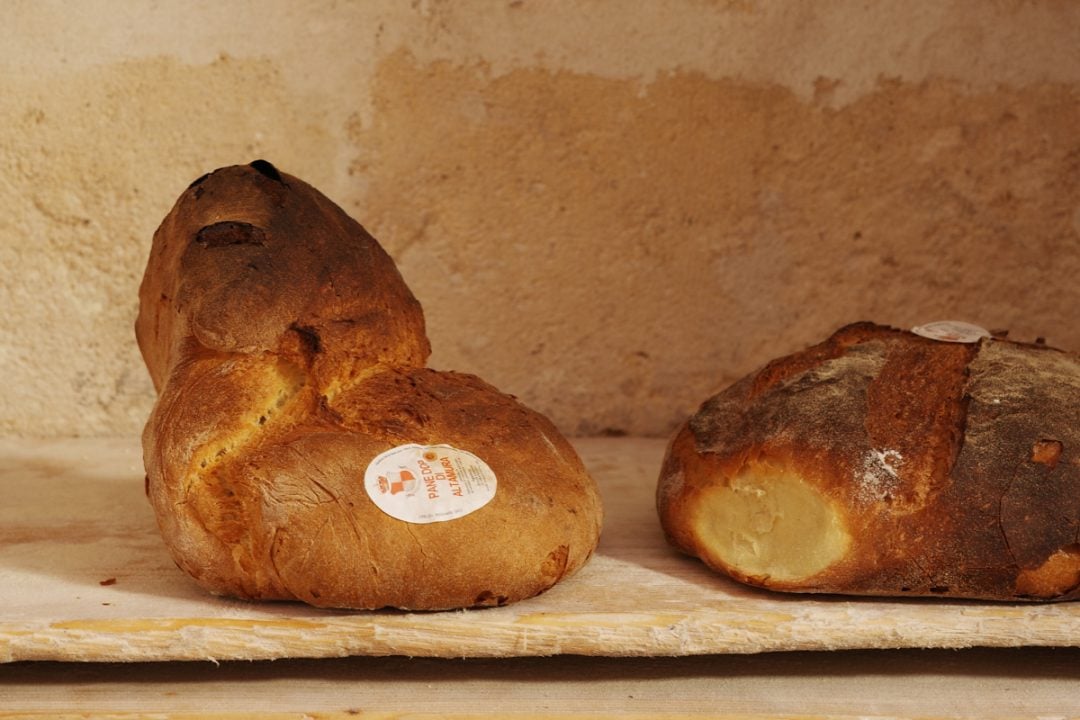At the end of September 2024, I accompanied a group of The Perfect Loaf readers through southern Italy’s olive tree and cobblestone-lined streets. Though I’ve been to Italy many times to visit family, it was my first trip as a tourist and a guide of sorts, and if I’m being honest, I wasn’t really sure what to expect.
Would the conversation flow? Is the itinerary paced just right? Did we pick the right mix of culinary experiences to make this a trip of a lifetime?
The short answer is yes. Yes to all of the above.
From the first group introductions at the masseria (an Italian farmhouse) to the big group meal that night at the edge of the sea, all the way to the final pizza-fueled meal at Pepe in Grani, not only were the guests seasoned travelers charged for adventure, but it was evident there was a shared passion food—and it was palpable. At each meal you could feel the joy, see the excitement, and hear the oohs and ahhs as the food was prepared and served.
The group was naturally curious about anything and everything carb-related and not. The constant jovial conversation came naturally, with chats ranging from Italian culture to the delicious taralli we made earlier that day to the tasting notes in locally grown and pressed olive oil. Throughout the trip, I felt like we had all been friends for ages, meeting up after a long break, sliding back into comfortable rhythms, and ready to journey on a shared experience.
…my biggest joy on this trip was finally meeting a group of readers from The Perfect Loaf face-to-face. (Okay, let’s be real; the pizza, cheese, and bread were pretty great, too.)
And from a personal perspective, my biggest joy on this trip was finally meeting a group of readers from The Perfect Loaf face-to-face. (Okay, let’s be real; the pizza, cheese, and bread were pretty great, too.) It’s one thing to email back and forth about fermentation, bread schedules, and mixing techniques; it’s a completely different thing to talk, taste, and travel together.
And so, with our shared passion for food and sourdough as a collective aspiration, we embarked on a trip through the countryside, through ancient cities rich with history, to dairy farms with cows housed so wonderfully it could have been a high-end AirBnB, all in search of the best bread, fresh cheese, pizza, and more.
Grab a cup of coffee and settle in. This is a long post, but I guarantee you’ll want to see each stop, the incredible exclusive experiences, and talk a bit about the unbelievable food we shared.


But First, Why Southern Italy?
When we started talking about this trip, it was clear the choice to start traveling with The Perfect Loaf was in Puglia, where half of my family is from. I’ve gone back there many times to visit, and these trips planted the culinary seed for me, inspiring many of the recipes you’ll find here (like my focaccia Pugliese). It’s also an area steeped in grain, bread, and pizza culture—three of my favorite things (and probably yours, too).
Food in southern Italy is made in an inconvenient way, and all good food should be inconvenient.

Now, Naples is a city I’ve never visited but have always been curious about. It’s the birthplace of pizza by all accounts, and not just that, there is the prized sfogliatella (a shell-shaped pastry filled with ricotta and candied fruit) and so much more.
Of course, southern Italy was the perfect destination because of my cultural tie-ins and because the food there is made slowly with care, attention, and appreciation. The food in southern Italy is made in an inconvenient way, and all good food should be inconvenient.
Who Was Involved With The Trip?

This trip was put together with my friends at TASTE, a website dedicated to food, beverage, and the culture surrounding it. After publishing my cookbook, I appeared on a podcast interview with TASTE, and that’s when talks about a sourdough-adjacent trip began, with Italy as the top choice.
Matt Rodbard (check out Matt’s Instagram; he’s living the food life I’d like to live), cookbook author and editor-in-chief of TASTE, and I, along with Academic Travel Associates, worked on the itinerary through many revisions, handpicking each location and experience to build just the right trip.
Matt and I would be co-hosts on the trip, along with the wonderful Angela, Marta, and local city guides. We were a great team, and each brought different experiences and insights to improve the trip.
Day 0: Preparing and Traveling
I wanted to have at least one sourdough workshop on this trip. The logistics of doing this internationally are possible, but given the rest of the itinerary, it had to be something we could do in half a day, and I wanted whatever it was to feature southern Italian cuisine. Enter my sourdough friselle, a recipe I created earlier this year.
How To Travel Internationally with a Sourdough Starter
To lead the workshop, I needed to bring my sourdough starter, so I decided to mix it up to a stiff consistency, not unlike a panettone lievito madre. The small inoculation (carryover ripe starter), reduced hydration, and use of all white flour were all attempts to reduce fermentation activity and prevent over-acidification.
Here’s what I did (you didn’t think you’d find a post here without a nerdy bread table, did you?):
| Ingredient | Weight | Baker’s Percentage |
|---|---|---|
| High-protein white bread flour | 200g | 100.0% |
| Ripe sourdough starter | 10g | 5.0% |
| Water (cool from fridge) | 110g | 55.0% |
I mixed the above the morning of my flight, wrapped it tightly in several layers of plastic film, then into a freezer bag. Mixing this to a stiff consistency meant I could risk bringing it as a carry-on, so I placed it in my backpack and crossed my fingers.
As I passed security, the guard pulled me aside with my bag and asked me, “What kind of burrito is this?” I smirked and had the feeling this wasn’t the first time he had found a green chile burrito in someone’s backpack. Hey, I don’t blame them; they’re delicious.
(If you want to travel with your starter—especially internationally—use my sourdough starter quicksheet and mix it to the stiff consistency listed above or on the sheet.)

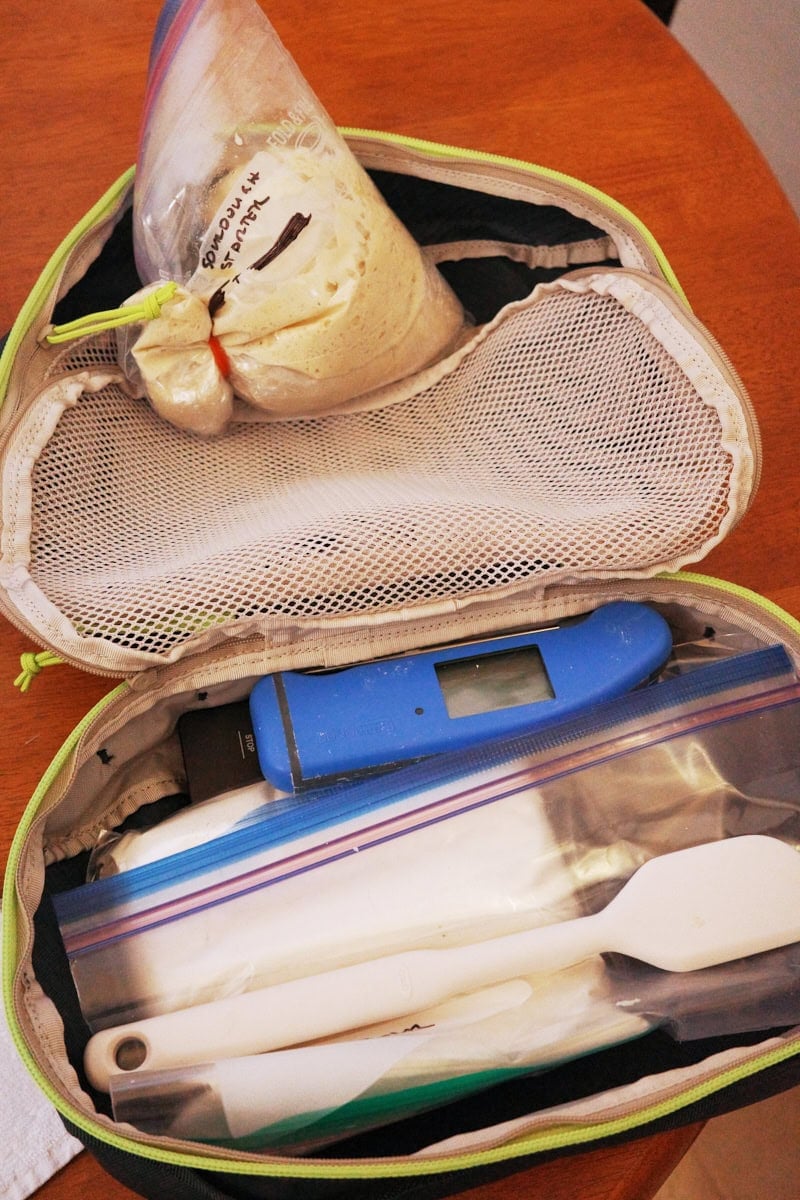
After traveling for about 24 hours, I unpacked my starter and saw it was pretty broken down (above, right), but the aroma wasn’t off or unpleasant. I used my “sourdough field kit” (small scale, bag of flour, spatula, paper towels, and thermometer) to feed my starter and get it back up to speed before prepping for the workshop.
Day 1: Welcome and Introductions
The group occupied the entire beautiful Masseria Monepaolo, a rustic yet modern resort just outside Polignano a Mare (which I visited earlier this year with my family).
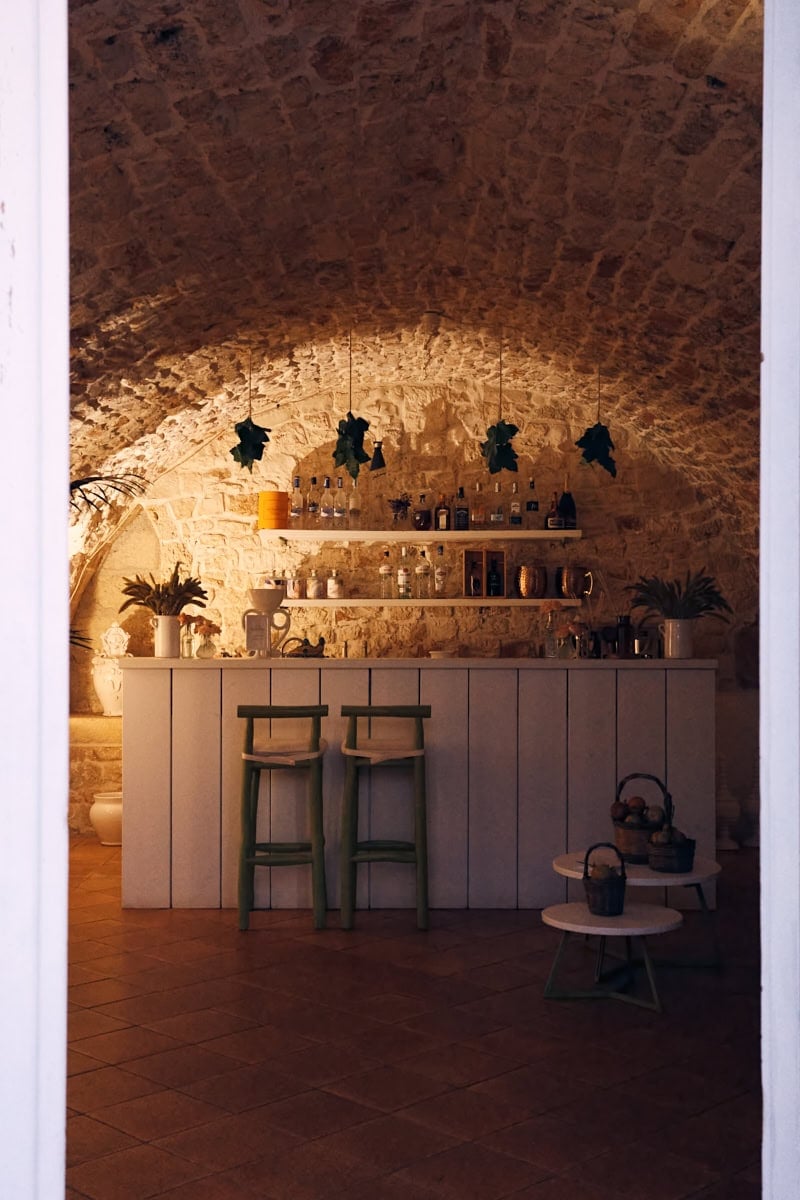
Many guests arrived a day or two early and were already exploring the place, having breakfast, and even heading into town for a jaunt. I met a few early for breakfast, and conversations were already circling bread and fermentation. After my second cappuccino and a cornetto, I had the feeling this was going to be a really great trip.
Later that day, we’d have our first group introduction at the entrance to the masseria before heading to Poglinano a Mare for dinner overlooking the sea. There could not have been a better place to start things off; the view was spectacular.

After excellent seafood, pasta, and many bottles of wine, we walked as a group to have gelato at a famous spot in town that didn’t disappoint. My first pistachio gelato of the trip (we won’t keep count here because it might give you the impression I love ice cream more than bread, which is not the case, I assure you).
After our outing to town, we went our separate ways to get some sleep, but my night didn’t end there. My last task after dinner was to prepare the large levain to seed fermentation in the friselle dough I’d be mixing the following day early in the morning.
Day 2: Pane, Olio e Pomodoro
I was adamant about leading at least one hands-on sourdough session on this trip. It took some logistical gymnastics to make it work, but I knew the guests wanted some dedicated dough time and a good opportunity to get any burning sourdough questions covered from the start.
Friselle Workshop and Lunch
Matt and I headed in early to the masseria’s kitchen to get to mixing. I sent ahead my ingredient list before arriving in Italy, and it’s just a joy to work with, see, and taste such fantastic flour in Italy. Of course, the prized and locally grown golden durum flour is top-notch, but so was the integrale, or whole wheat they sourced. Just look at those huge chunks of brand and germ in the dough (below, middle)!

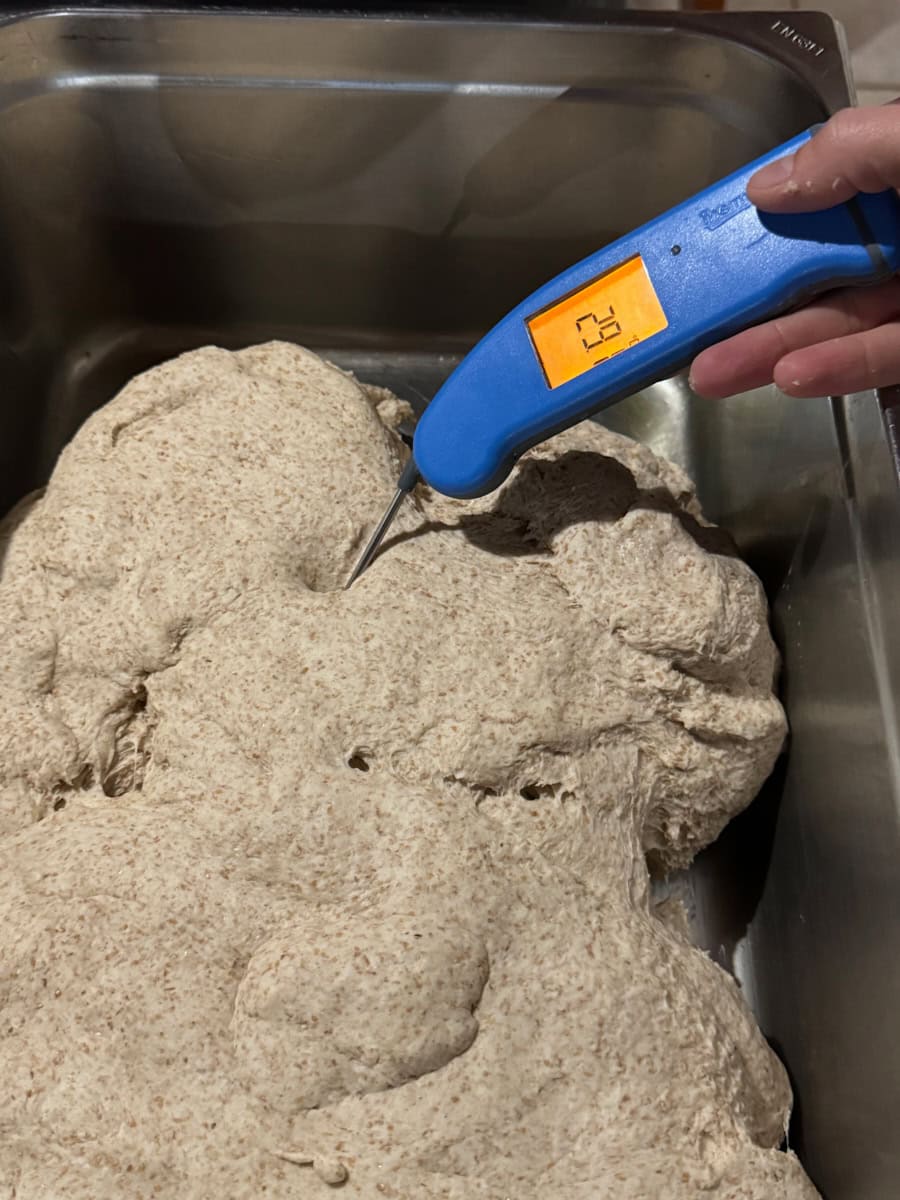

The large levain I prepared the night before was super active and ready to mix with the whole wheat and durum flour, local sea salt, and water in their large spiral mixer. This is a relatively stiff dough, which makes it easy to shape, but also results in friselle that are ultra crunchy.
A shout out to Matt for the assistance in the kitchen and to Lucretia (above, right), the lady no doubt running the show there in the kitchen most days. As is often true with Italians, she was friendly, eager to help, and took food and her work in the kitchen very seriously. Just as my nonna used to say, “There’s no time to waste in the kitchen.”
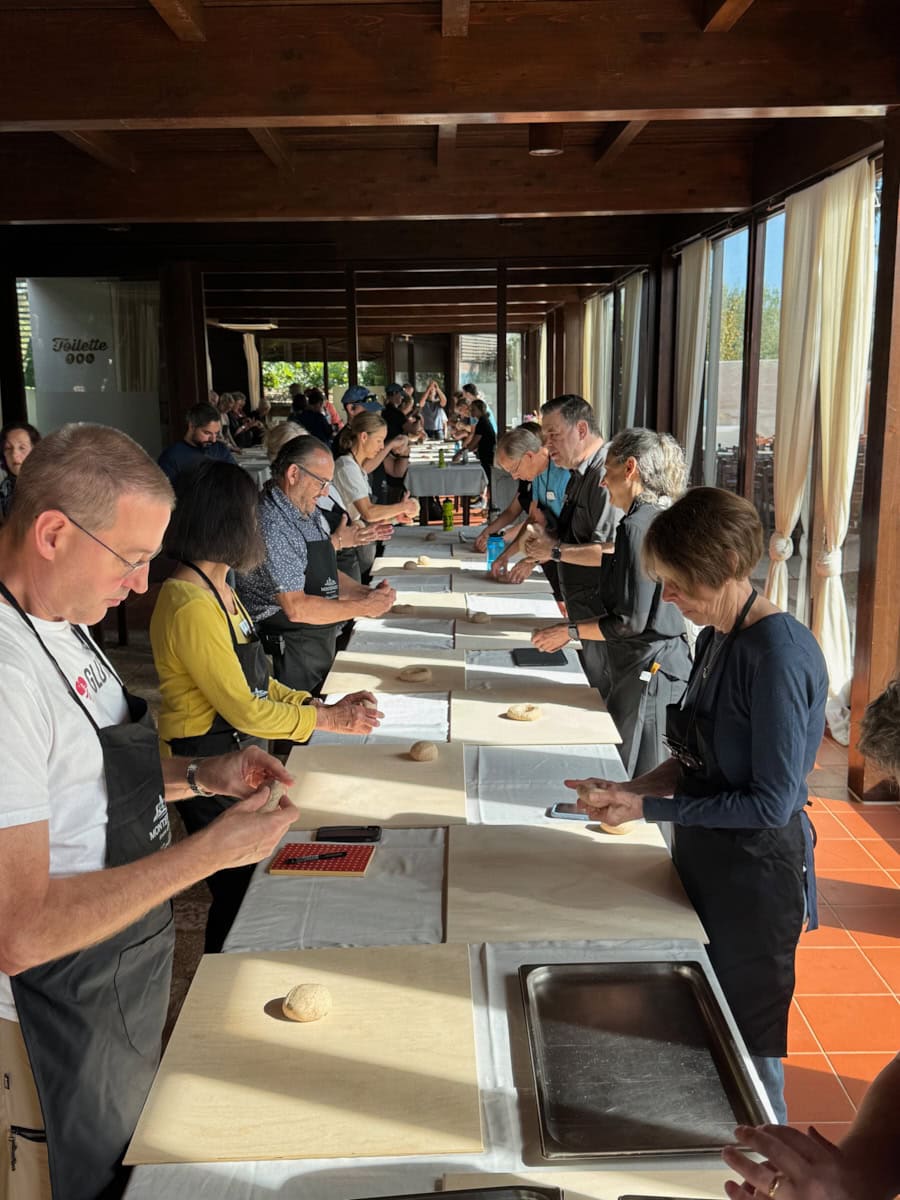



The fruits of our labor this morning—the friselle—were on the menu for lunch covered in tomatoes, olive oil, and a light drizzle of balsamic, alongside a parmigiana, fried vegetables, and baked maccheroncini with tomatoes and a caciocavallo fondue.
After all the baking fun in the morning and a satisfying lunch, it was time to rest for a few hours, then head to Ostuni.
A Tour of Ostuni, an Olive Oil Tasting, and Dinner
As kids, my family and I would often visit Ostuni, also known as the “white city,” thanks to the buildings, most of which are painted white. It’s a small picturesque town that’s been around since the Stone Age. A local guide took us through the ancient city, providing historical context as we explored small squares, workshops, and daily life.

After the tour, we transferred to Masseria Il Frantoio for an olive oil tasting with a sommelière and dinner on the grounds.
I must admit this was my first olive oil tasting in this way, and it was quite fun. The host walked us through the olive varieties and how they’re grown, harvested, and pressed. Then, we tasted each as she pointed out the tasting notes.

This reminded me of baking classes I’ve led and taken, where there’s a group tasting of all the bread baked that day. Tastings like this are an excellent way to step back and interrogate your sense of taste, put words to sensations that otherwise might go unnoticed, and develop a greater appreciation for the food and what goes into making it.
After the olive oil tasting, we had dinner at the masseria on the grounds, and it was a showstopper. We had a long service with an innovative menu of octopus, green beans with ricotta, aubergines and mozzarella, grilled veggies, and meat with caciocavallo cheese in a light ragù with potatoes and rosemary. Lots of their olive oil featured throughout the menu and bottles of fantastic wine aplenty.
It was a very full day, but the next one was, in my opinion, one of the best of the entire trip. We finally got to taste bread right in Altamura.
Day 3: Pane di Altamura and Formaggio
In the morning, we checked out and said goodbye to our masseria near Poglinano before taking a large bus to Bari, our base for the next few days. But on the way, we’d first stop in at Di Gesù to see how pane di Altamura DOP (a closely governed style of bread specific to this region) is made, from the grain in the field to milling the flour to using it in bread and focaccia.
Altamura Bread Making with Di Gesù
Altamura bread is sourdough bread made with durum wheat grown in the surrounding area, giving it a distinctive color, flavor, and texture. Because natural fermentation is used, along with its thick crust and dense crumb, it has a lengthy shelf life if stored properly. The rich flavor of this bread is slightly sour with nutty undertones and an almost sweet aftertaste, and the thick, profoundly colored crust brings notes of toasted grain.
All of that is to say, it’s freaking delicious.

We walked a few streets and found the entrance to the bakery right as we were greeted by Giuseppe di Gesù, a lively and passionate baker whom I believe is the fifth (maybe the sixth) generation in the family running the bakery. The amount of grain and bread they produce here every week by hand is staggering. Luckily, we had the chance to take a short class and use their dough to make focaccia, which we’d eat just a short while after.
It’s hard to capture how wonderful this experience was. Not only was Giuseppe a fantastic host and teacher, but the baker who demonstrated shaping techniques clearly had shaped tens of thousands, if not more, loaves of bread. His hands belied his humble demeanor, which worked almost automatically with a quiet confidence that only develops after many years of work.

Eating the focaccia here, made with 100% durum and topped simply with olive oil, tomatoes, and black olives, brought me back to my childhood when we’d grab these daily en route to the beach or hanging around town. A simple and staple food, really, but this focaccia in southern Italy is unlike anywhere else. The flavor of the nutty durum grain, the fruity and liberally-used olive oil, the salty kick, the heady fermentation, and the toppings… For me, they all define the golden standard for focaccia.
After eating this spectacular bread, a little panettone, and some sweet pastry, we’d head up into the mountains to the Mercandante Forest for cheese, and a little show.
A Variety of Cheeses at Baby Dicecca
Nestled in the remote mountains of the area, Baby Dicecca is doing some unique work with cheese produced in the area (by the owner’s family, actually). This visit was a great example of a reoccurring theme we’d run into on this trip: the tension in Italy between adherence to tradition and history and the desire to innovate and break new culinary ground. To do something a little different with these great time-honored products.
For example, you could top an entire wheel of blue cheese with sweet cherries and slice it up like a cake (below, left).
In addition to trying all the innovative cheeses Dicecca had to offer, the owners also spoke about their reverence for the raw milk they receive from the family business to produce these new creations. They showed how they stretch mozzarella by hand and pair it and other cheeses with locally made bread. It was a show of culinary delights that, thankfully, we also got to eat.


After the cheese experience, we had a free evening in Bari to relax and recuperate (or, as Matt and I did, get gelato and yet another pizza). The next day, it would be all about taralli and cheese.
Day 4: Taralli and More Cheese in Bari, and a Stroll Through Alberobello
In the morning, we visited a local taralli maker to see how they’re made, then tried to keep up with the ladies shaping, who moved so fast it was hard to capture them on camera.
Taralli Making Workshop at Il Tarallo di Palo
Taralli are small, twisted crackers indicative of southern Italy. The base is flour, salt, water, and olive oil, but from there, the inclusions can get pretty wild: black pepper, white wine, sundried tomatoes, olives, paprika, and much more. The cracker’s shape can range from a simple ring to an elaborate knot; conceivably, the different shapes impart different eating experiences and are for different use cases (I’m a simple man, give me the humble ring, and I’m happy).
They are a common snack you’ll find whenever you go to someone’s house, sit at a table, or ask your friend to bring something to tide you over on a train ride. They’re ubiquitous, addictive, and tasty.


We spent a good hour there asking questions, shaping our own taralli, tasting samples, having an espresso, joking with the workers, and eating more samples.
A Visit to Masseria la Lunghiera, Where Cows Are Kings
Next, we were on a bus and off to a dairy farm-cum-masseria. This farm is a prime example of how treating animals well can produce award-winning and downright delectable food. It is a reminder that our food comes from somewhere, and if that somewhere is treated well, raised well, and ultimately respected, it only benefits us all.

After a beautiful demo of how their raw milk is transformed into mozzarella, burrata, treccia, and caciocavallo, we walked over to the historical stone building for lunch.
This meal was a highlight because the cheese was just that good. The fresh mozzarella was milky, a little sweet, buttery, and even with grassy undertones. But the real winner for me was the fresh ricotta (below, left, under the jam). It’s hard even to fully capture the flavor and texture in words, only that I wanted a bucket of that to go, please.


After lunch, we bused out to visit Alberobello, a spot I’ve often visited when visiting family. It’s a small town famous for the large number of Trulli (circular buildings with conical roofs made of limestone, usually with a white ball on top). It’s a bit touristy here, but it’s still a magnificent sight, and the food in the nearby town is pretty great, too.

After another busy day, it was a free night to relax in Bari. A few of us went out to have drinks (a negroni, if you’re curious), then back to the hotel to rest for another busy day tomorrow.
Day 5: Antic Bari and Orecchiette
After a solid four days of touring, eating, and more eating, day 5 was a little more laid-back—and we needed a bit of a rest.
We casually explored Bari in the morning with a local tour guide who gave us the ancient city’s history as we visited cathedrals, piazzas, and local craft shops. Like Ostuni, Bari is an ancient city with an interesting history intertwined with the Byzantines, Normans, and Turks.
After our tour, lunch was delicious orecchiette pasta with broccoli rabe, baked white fish, and sporcamusi, a puff pastry filled with crema pasticcera (like the one I use in bomboloni), for dessert.


In the afternoon, we were off on a scenic three-hour bus ride to Naples. Upon arrival, we checked into our incredible hotel, San Francesco al Monte, an age-old monastery nestled on the side of a cliff overlooking the city and the sea. It couldn’t have been more picturesque.
Dinner was conveniently at the hotel and consisted of linguetta pasta with mussels and a potato sauce whipped with provolone. From there, roasted pork and leeks to a delicious puff pastry with limoncello cream and candied citrus.
The following day, we’d wake up and explore the hustle and bustle of Naples proper.
Day 6: Coffee, Sfogliatelle, and a Pizza Crawl in Naples
Naples sometimes gets a bad rap for crime, but isn’t that true of just about every big city, anyway? While the city is highly hectic and bustling, the tremendous energy and dynamism are infectious. At any moment, you’re standing on a low street with immense hills to the left and right, forming a giant “V” to either side (think Inception-like street folding), as scooters and bicycles whiz past, an airplane flies overhead, and a distant TV blares the current soccer game.
Oh, and just to clear it up, we had zero problems with crime, though everything my dad always said about Naples as a kid was true: It’s a city unlike any other.

What I love about densely populated cities like this is the flow that emerges from the chaos. The cars, scooters, bikes, heck, even the people, move together like a single giant organism, aware of every other part. As Angela said, accidents rarely occur in Naples despite the sheer number of cars and winding streets. Only when a non-local comes and doesn’t go with the flow does something happen. I could see it. I could feel it.
Our first event in Naples was an excellent city tour with a local Italian guide. The guide focused on the city’s extremely long history and culinary evolution.
At the end of the walking tour, it was time for a coffee break.
Coffee in Naples
I’m going to get this out of the way: I feel like most Italian coffee is pretty terrible. Dark, viscous, and bitter like a lightly strained battery acid. When you recalibrate your palate toward fresh, lightly roasted coffee and begin to dive into all the flavors discovered therein, it’s hard to go back to what my Italian uncle used to say: If it’s not bitter, it’s not good.
When traveling in Italy, the solution lies in a bit of trickery: working in a little milk with that proudly pulled afternoon Italian espresso. However, milk + coffee after breakfast is mostly frowned upon, but there’s a secret. Do as I do and order a macchiato. An espresso with a splash (or “mark”) of milk, which goes down a little smoother, leaving your delicate (refined?) American palate mostly intact.
After a quick coffee and pastry break at Cafe Gambrinus, it was time to make some pasta!
Gnocchi and Ravioli Pasta Workshop
The afternoon was filled (pun intended) with a pasta workshop at Toffini, and boy, was this fun. The instructor-led class had us roll out freshly mixed dough, fill it with cheese and herbs, and then cut out each individual ravioli. After that, gnocchi were mixed, rolled, and cut.


At the very end, we cooked our handmade pasta and sauteed it with tomatoes, olive oil, and more herbs. It was a simple lunch but a satisfying one.
Next, we needed dessert.
The Heavenly Sfogliatelle of Naples

I had one of the best pastries of my life here in Naples at our stop at Forno Carraturo. As a private group, we had access and a tour through the upstairs kitchen where the Italian bakers demoed and tried to explain the butter, flour, and fruit magic they conjured there day after day for over two centuries (!).
The location, the bakers, and the aroma of freshly baked pastry all made the final tasting of the sfogliatelle a revelatory experience. I can still recall the impossible number of flakey layers crunching with each bite, the warm, sweet ricotta and candied citrus playing perfectly off each other to give a sweet-then-savory one-two that made the whole experience not unlike when I first tasted a loaf of truly good sourdough bread.
The problem with visiting places like this is that after the euphoria wears off, you realize you just can’t have this anywhere else. The fix is easy, though: go back inside and order another one.
After a quick transfer back to the hotel, we had a few hours to rest in prep for a busy evening to come.
A Pizza Crawl Through Naples
There are so, so may pizza spots in Naples it’s impossible to do them all in a few days, let along a month (or more). We decided it might be fun to have an old fashioned pizza crawl one night, hopping from pizza spot to pizza spot, trying a small sample of the sheer variety of what they call “pizza” in naples.
We enlisted a local guide, a PhD researcher in Italian culture, and a person who is very passionate about food and the food history of Naples to take us to three very different spots in downtown Naples. The crawl was a touch wild as we weaved through traffic, the sheer number of people, and the density of it all. It pushed the group a bit, in a good way. We were out to experience authentic Naples at night, all of the hustle and bustle that is the city.
We had three unique takes on the universal food:
- A classic Neapolitan pizza margherita—pizza with a soft crust, mozzarella cheese, tomato sauce, and basil
- Pizza fritta—fried pizza filled with sausage, cheese, and more
- Pagnottiello—a very local, unique style of pizza that’s essentially a round bun filled with meat, cheese, and a hard-boiled egg



Each was delicious in its own way, though if I’m honest, and I think many of the guests would agree, we’d have some of the (if not the) best pizza the next night…
Day 7: Cheese in the Country and Pizza, Pizza, Pizza at Pepe in Grani
It was essentially our last day touring together in Italy, but despite all the enchanted culinary adventures thus far, it would be a whopper.
We woke and had breakfast, a few cappuccini, and loaded the bus to head out of busy Naples to the serene mountains in the countryside.
Cheese at Agriturismo Le Campestre
Our stop was an agriturismo (a place that mashes up agriculture and turism, plus a little food) focusing on a very special local cheese that’s supplied to the restaurant Pepe in Grani, where we’d have dinner that night. The aged cheese is called conciato Romano, and it’s pungent and spicy, with an earthy kick, tasting similar to pecorino Romano (just don’t tell them that).
It was inspiring to see the beautiful hills, wild donkeys running around, houses nestled in dense overgrowth, small plots of grapes, fruit trees, and more. They’re making cheese out here the old way, without sophisticated machines and steel vats, but rather in terracotta pots and handmade crates. Again, inconvenient food makes for delicious food.

We sampled the cheese, along with local candied pears (so, so good) and a bit to drink. Amidst the beautiful scenery, a group of eager foodies, and a backdrop of Italian being spoken between the nonna and grandson working there, it was absolutely captivating in every way.
After buying some cheese to take home, we went to Pepe in Grani for pizza.
The Final Farewell Dinner at Pepe in Grani
I must admit, my favorite style of pizza is a toss-up between the New York style and thinner, crispier varieties. But this was my first time eating proper pizza in Naples, and this is arguably one of the best pizzerias in the world. I was ready to be impressed.
…this pizza made our taste buds dance.
We were lucky that night. Franco Pepe, the owner, was there, and we had the privilege of meeting him, talking about how he started the restaurant, sourcing ingredients from local farmers, and finishing it all off with a guided tour through the kitchens and more. What a host, what a showman.
After we sat and as the waves of pizza (I think 5 in all?) started, from the very first bite of a light fried pizza with tomato and anchovies on top, I knew we were in for a treat. Marta, our guide, put it best after we tried the first few slices: this pizza made our taste buds dance.



Each pizza had the perfect combination of ingredients. The toppings were world-class, to be sure, with a balance of acidity, saltiness, unctuousness, and sweetness. The crust’s texture was soft and pillowy, with a bit of toothsomeness and faintly crispy, and it had a very mild, clean flavor profile.
There’s a lot written about this pizzeria, and sometimes it’s hard to believe hyperbolic claims, but I have to say, this was certainly some of the best pizza I’ve ever tasted.
It was also the perfect ending to an already incredible trip. The camaraderie shared at the final meal between us all was just a reflection of how quickly you can become friends with those you travel with.
What’s Next?
Thank you to Matt, TASTE, ATA, and Penguin Random House for making this trip happen. But even more, thank you to all the guests who joined me on this trip. I can confidently say that we departed as close friends, full from all the great food and shared experiences.
I can’t wait for the next one—and there will be a next one!
Want to join me on our trip next year? The Baker’s Corner community members get first dibs at booking, but either way, keep an eye out on the newsletter for the next announcement.
A presto!


